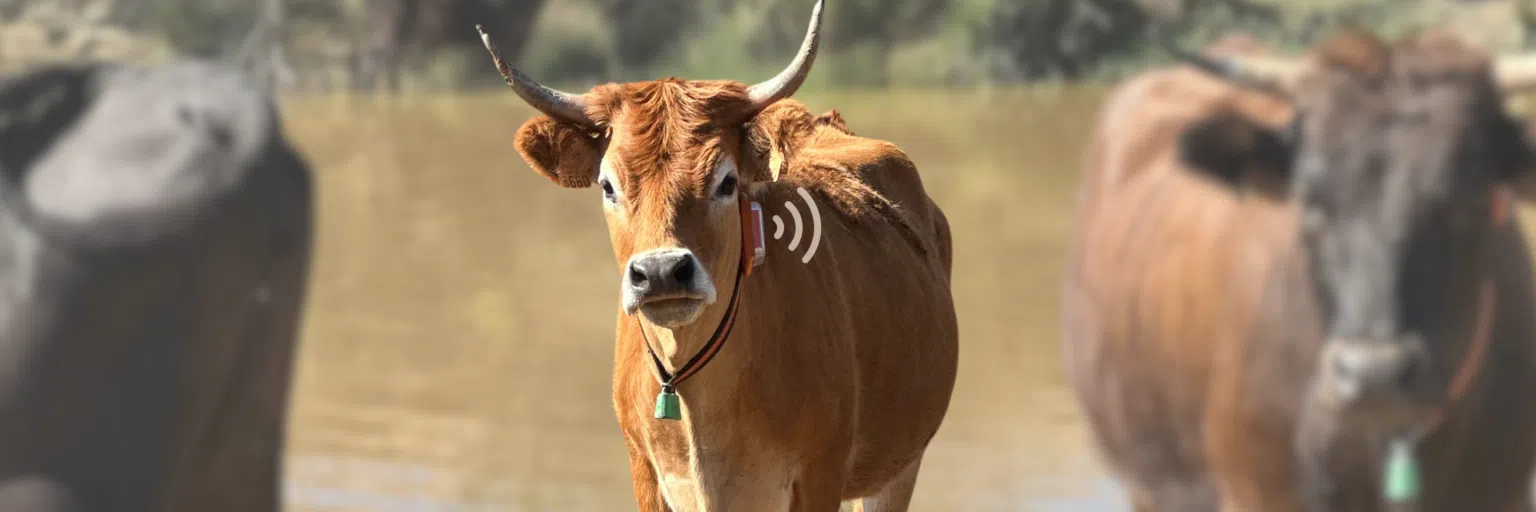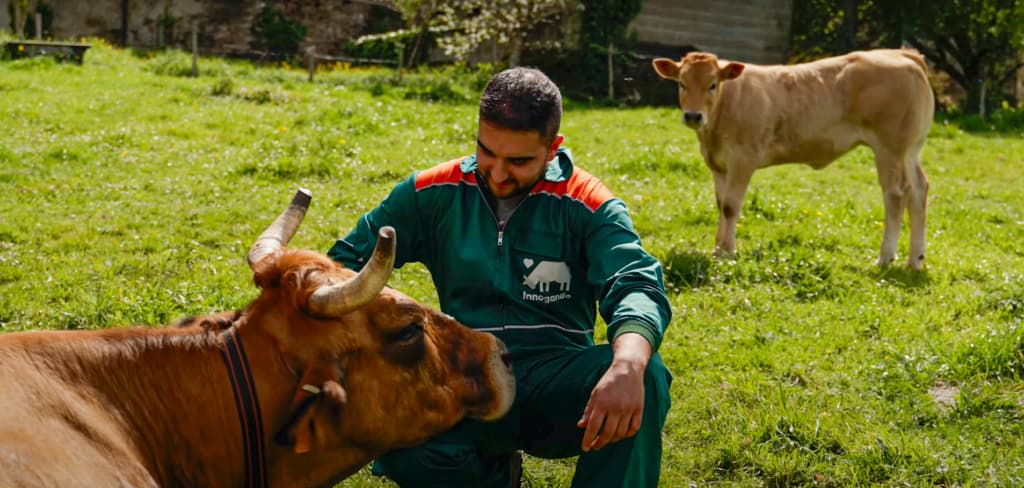Probably many of you are asking yourselves this question, and since this system has started to gain more relevance and fame in our sector, it seems to be a must in extensive livestock farming. But before answering the question, it is important to understand the pros and cons of virtual fencing.
Livestock innovation
Technology has revolutionized the livestock industry. In recent years, tools such as activity monitoring, early disease detection and feed system optimization have enabled farmers to improve efficiency and animal welfare, reduce costs and make decisions based on accurate data. Innovations such as rumination sensors, tracking collars and management applications have proven to be indispensable innovations to modernize livestock farming and make it more profitable.

In this context, virtual fencing has become a trend that promises to transform the way grazing is managed. But is it really the solution you need? Before investing in this technology, it is essential to analyze whether it suits your farm.
2. How does it work?
It is a technological system that makes it possible to delimit grazing areas without the need for physical fences. It works by means of electronic devices, generally GPS collars, which emit auditory signals and electrical stimuli to train the animals and prevent them from crossing the pre-established limits.
- Perimeter delimitation: Using a mobile application or software, the farmer establishes the limits of the grazing area on a digital map.
- Livestock equipment: The animals wear collars with GPS and sensors that detect their position in real time.
- Warning system: When the animal approaches the digital limit, the collar first emits an audible alert(s) to deter the animal.
- Electrical stimulation: If the animal ignores the alert and continues to advance, it receives an electrical stimulus in order to condition it not to cross the boundary.
- Monitoring: The system outputs data on the location and general behavior of the livestock.
Advantages and disadvantages of Virtual Fencing
Advantages
- Allows flexible grazing management without the need for physical fencing.
- Facilitates pasture rotation over large areas of land.
- Provides real-time data on the location and movements of livestock.
Disadvantages
- Impact on animal welfare: Electrical stimuli can generate stress and affect their behavior and, therefore, the productivity of the herd.
- High cost: Requires significant initial investment in collars, software and subscriptions.
- Not ideal for small farms: On small land, its effectiveness is limited and not very profitable.
- Technological dependence: They need internet connection and work with batteries that need to be charged or changed.
Although this type of system may be useful in some circumstances, it is not a universal solution for all farms. Before implementing it, it is important to evaluate whether it really brings benefits in relation to its cost and its impact on animal welfare.
4. Alternatives
There are several alternatives that allow efficient livestock management without resorting to electrical stimuli or disproportionate investments for some pockets. These include intelligent monitoring systems, which offer advanced tools for the delimitation of grazing areas and herd control. Here are 4 of them:
A. Rumi: Farm delimitation and departure alerts
Alternatives are also important and worth considering for more traditional livestock management. Traditional grazing methods, along with the use of appropriate fencing, can provide efficient and sustainable results.
Rumi is an advanced monitoring and geolocation solution that enables efficient livestock management without the need for electrically stimulated fences. Its system offers two key functionalities for area delimitation:
- Farm delimitation: Through a digital platform, the farmer can establish the physical boundaries of his farm for precise grazing control.
- Farm exit alerts: If an animal leaves the delimited area, the system sends a real-time notification to the farmer, allowing a quick reaction and without the need to intervene with electrical stimuli.
This technology respects animal welfare and offers a more sustainable and cost-effective alternative to this type of fence.
B. Physical barriers with monitoring systems
A combination of traditional fences and smart sensors allows for a more natural control of livestock without resorting to electric shocks. Conventional fences can be complemented with geolocation devices that alert the farmer if an animal tries to escape, improving herd security without affecting herd behavior.
C. Managed grazing with activity sensors
Instead of restricting livestock movement with virtual barriers, activity sensors allow optimizing pasture rotation and animal distribution based on their behavior and nutritional needs. This not only improves pasture productivity, but also avoids unnecessary stress on livestock.
D. Regenerative Management Grazing Systems
Regenerative grazing uses planned rotation strategies, allowing animals to graze in different areas in a controlled manner and without the need for technological restrictions. This approach, combined with monitoring tools such as Rumi, ensures sustainable land management without compromising the health and welfare of livestock. At the same time, it regenerates soils and respects the biodiversity of each area.
5. Conclusion
Virtual fences are not the only option available to manage livestock efficiently. There are other alternatives that are respectful, cost-effective and adaptable to the diversity of existing farms.
If you are looking for a way to improve your livestock management without compromising animal welfare, explore solutions like Rumi and other smart monitoring technologies – innovation in livestock farming does not have to be at odds with profitability!

Advanced monitoring systems provide key information on the location, health and behavior of animals without compromising their welfare or requiring disproportionate investment.
Before making an important decision such as implementing Virtual Fencing, consider whether it really fits the needs of your herd. Is it an effective solution or just a trend?
At Innogando we help you find the best technology to optimize your farm without compromising the economy or the welfare of your herd.

